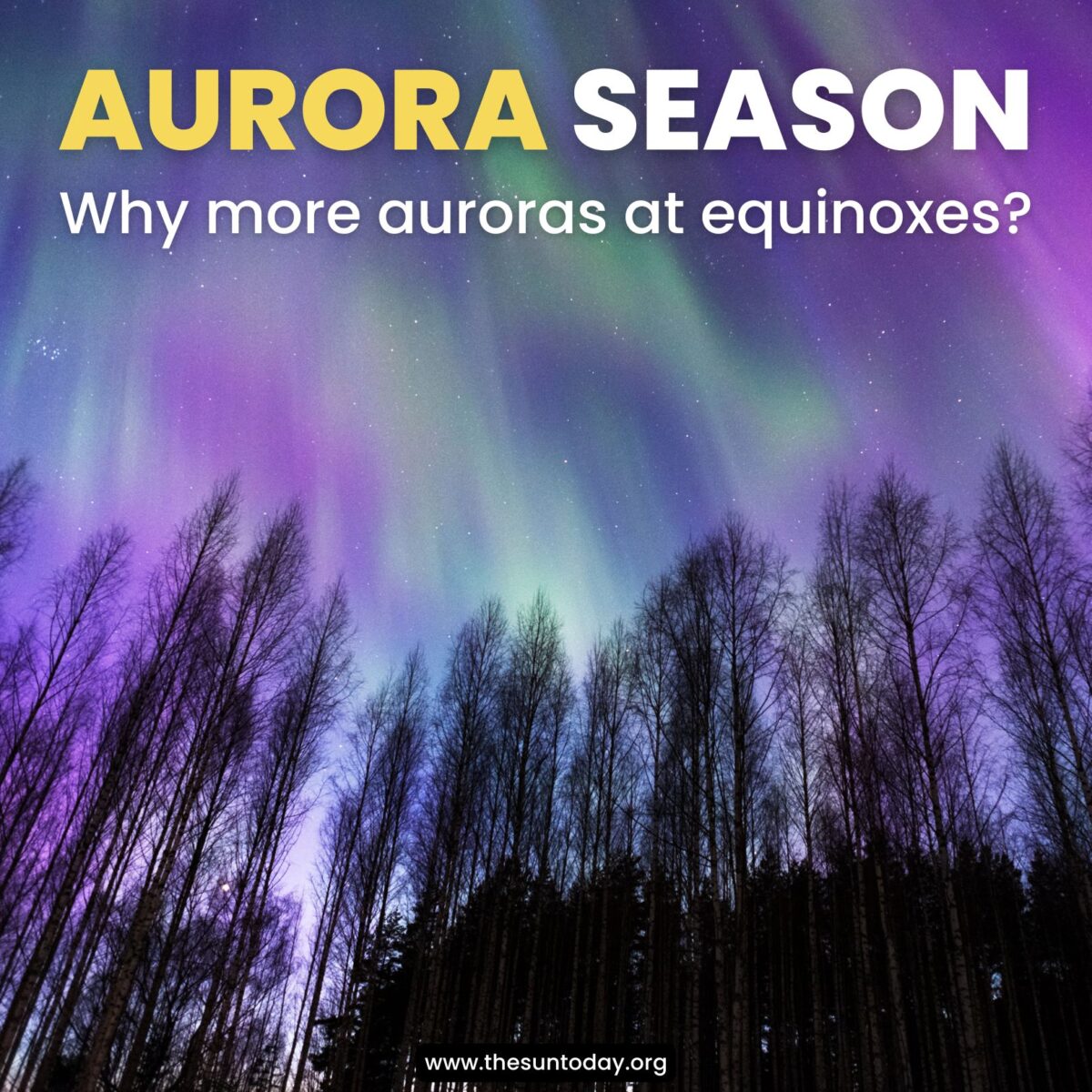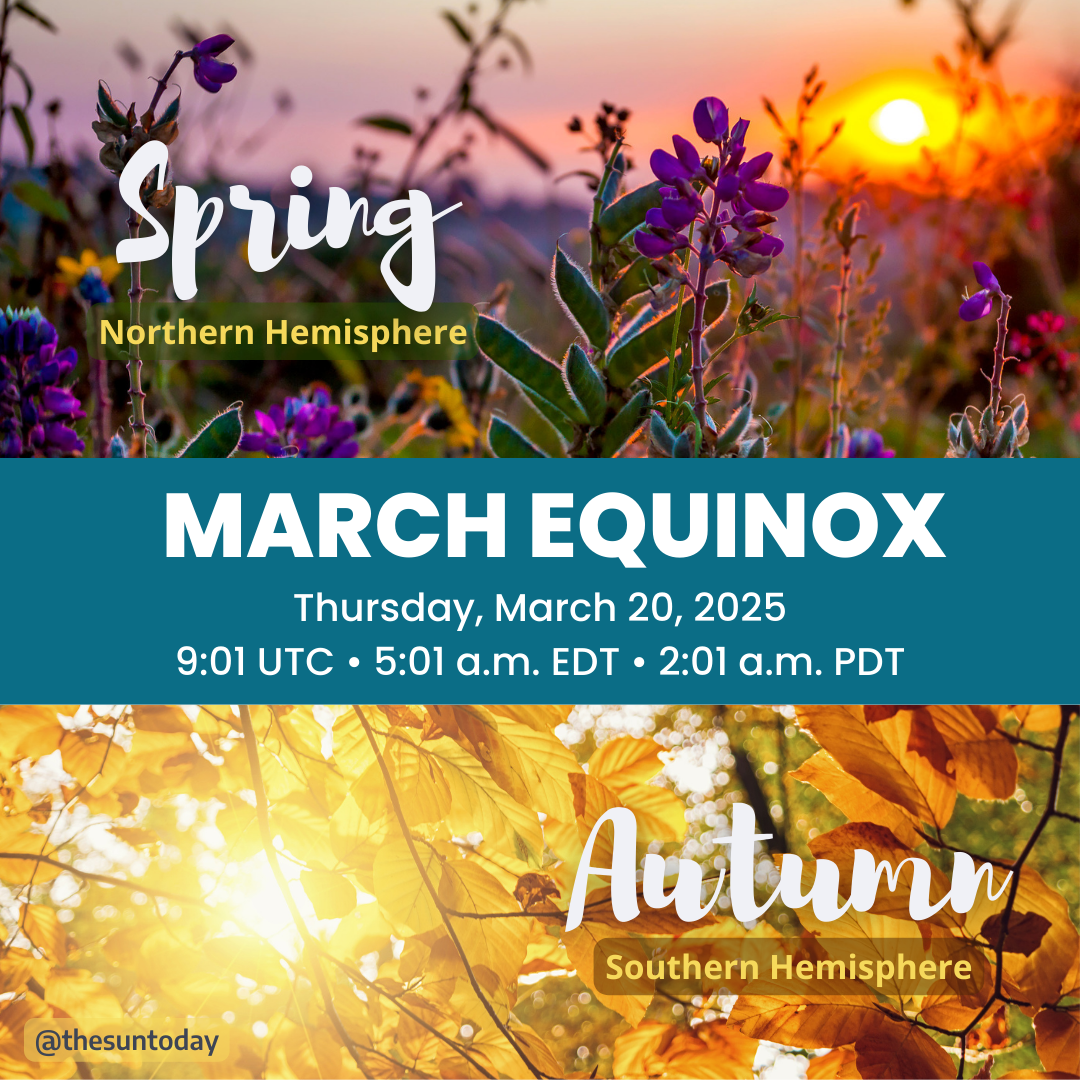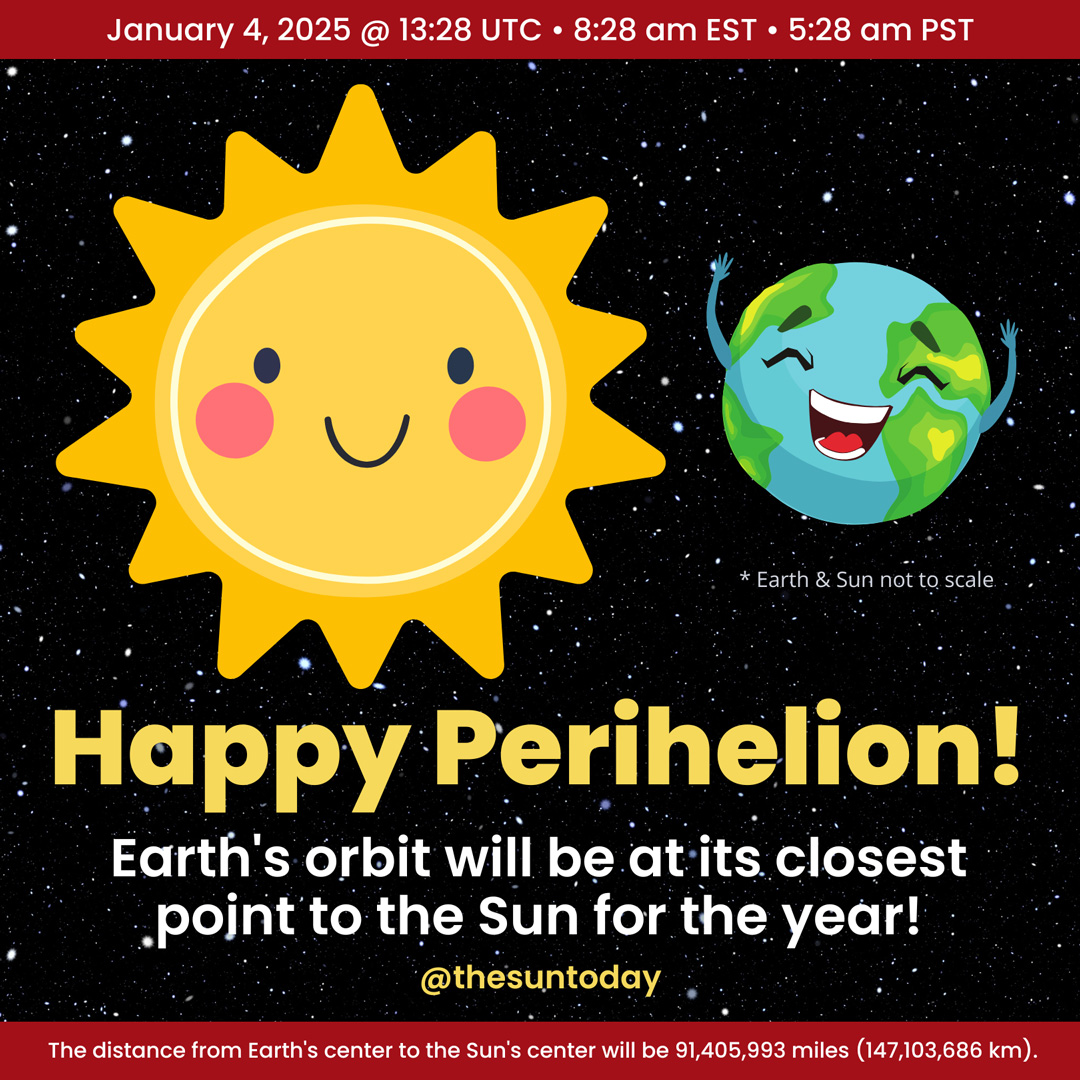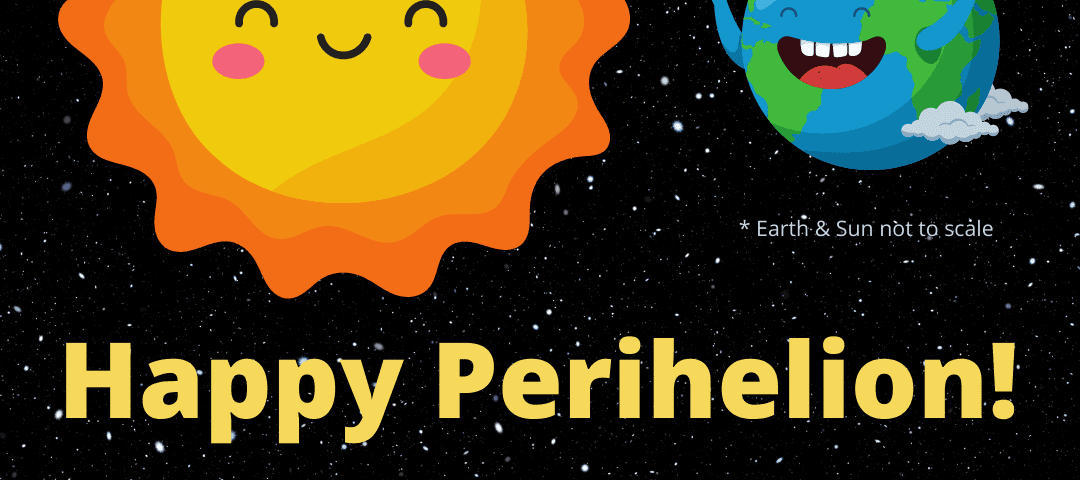
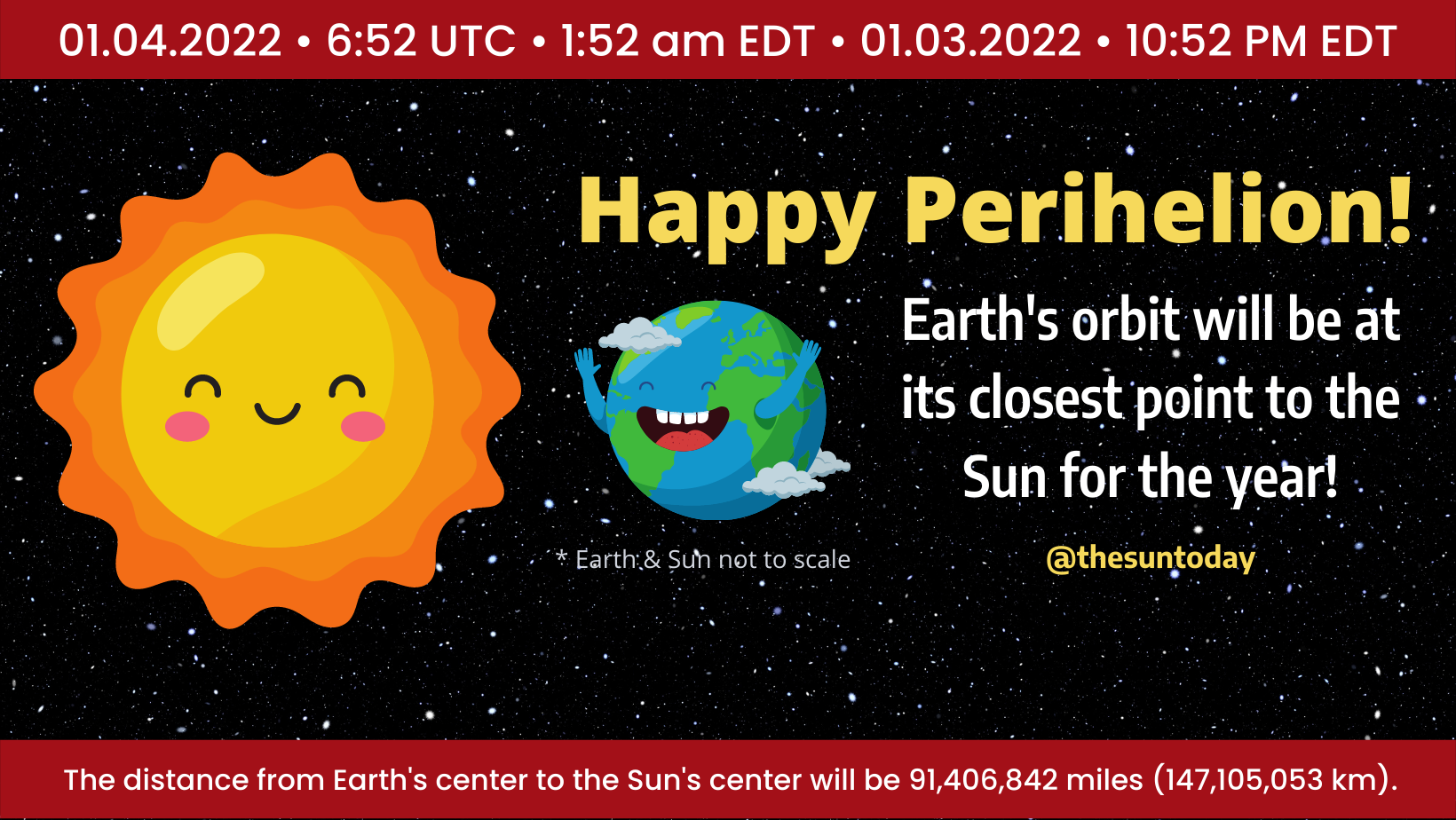
It is that time of year again when Earth makes a close swing by the Sun!
On January 4, 2022, at 1:52 a.m. EST (6:52 UTC), Earth’s orbit will be at our closest point to the Sun for the year.
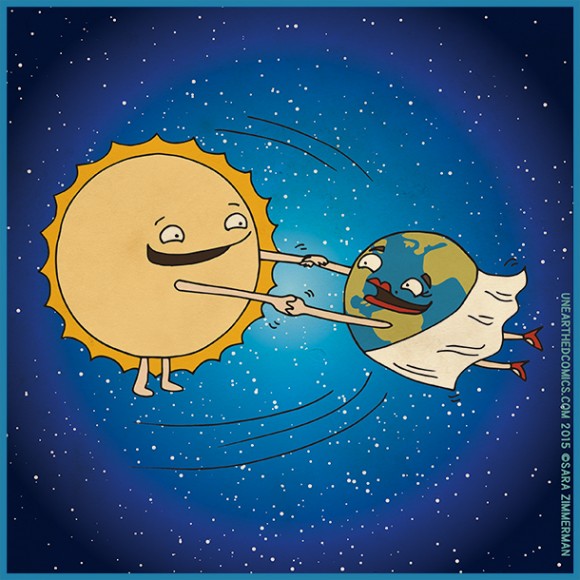
A cartoon of the Sun swinging Earth. Earth orbiting around the Sun. credit: Cartoon via Sara Zimmerman at UnEarthed Comics. (shared by Earthsky.org)
This point of closest approach to the Sun is called perihelion. The point when Earth is farthest from the Sun is called aphelion.
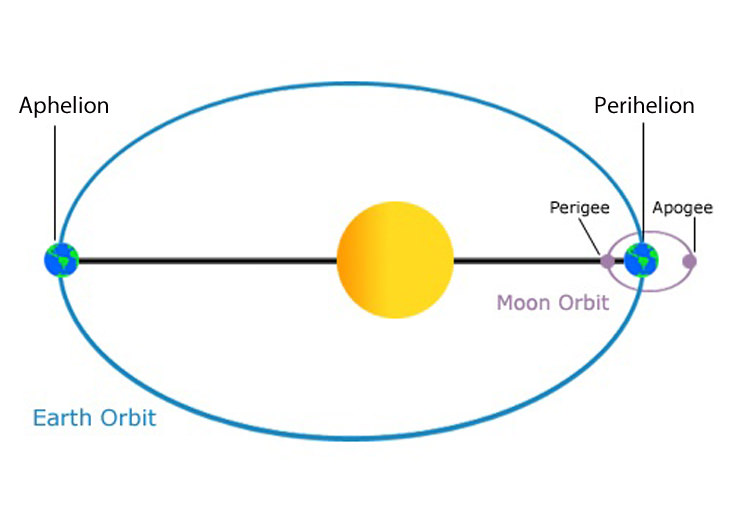
Aphelion versus Perihelion. (Orbits exaggerated). Image credit: NOAA/NASA.
- These terms are specific to a body orbiting the Sun.
- For satellites of Earth (including the Moon), the points of the farthest and closest approach are called apogee and perigee, respectively.
- The generic terms for the farthest and closest approach of a body in an elliptic orbit about a larger body are apoapsis and periapsis, respectively.
The diagram below shows the times and positions of the Earth during the solstices, equinoxes, perihelion, and aphelion as it orbits the sun over a year.

Credit: http://bit.ly/1pQn7wy
This diagram shows the relation between the line of solstice and the line of apsides of Earth’s elliptical orbit. The orbital ellipse (with eccentricity exaggerated for effect) goes through each of the six Earth images, which are sequentially the points of:
- Perihelion (periapsis—nearest point to the sun) on anywhere from 2 January to 5 January
- March equinox on 20 or 21 March
- June solstice on 20 or 21 June
- Aphelion (apoapsis—the farthest point from the sun) on anywhere from 4 July to 7 July
- September equinox on 22 or 23 September,
- December solstice on 21 or 22 December.
A common misconception is that seasons are caused by our distance from the Sun. Learn more »
- At aphelion Earth is 1.0167 Astronomical Units (AUs) or 152,098,454 kilometers (94,509,598 miles) from the sun
- At perihelion, it is 0.9833 AU or 147,105,053 kilometers (91,406,842 miles) from the sun.
However, the times of greatest solar radiation on a hemisphere happen not because of the distance between the Earth and sun but the tilt of Earth’s rotation axis. These times are during the December and June solstices.
Here are Earth’s perihelions and aphelions for 2022 through 2026.
| Year | Perihelion | Distance | Aphelion | Distance |
|---|---|---|---|---|
| 2022 | January 4, 2022 1:52 am | 91,406,842 mi | July 4, 2022 3:10 am | 94,509,598 mi |
| 2023 | January 4, 2023 11:17 am | 91,403,034 mi | July 6, 2023 4:06 pm | 94,506,364 mi |
| 2024 | January 2, 2024 7:38 pm | 91,404,095 mi | July 5, 2024 1:06 am | 94,510,539 mi |
| 2025 | January 4, 2025 8:28 am | 91,405,993 mi | July 3, 2025 3:54 pm | 94,502,939 mi |
| 2026 | January 3, 2026 12:15 pm | 91,403,637 mi | July 6, 2026 1:30 pm | 94,502,962 mi |
| * All aphelion/perihelion times are in local Eastern time (ET). | ||||
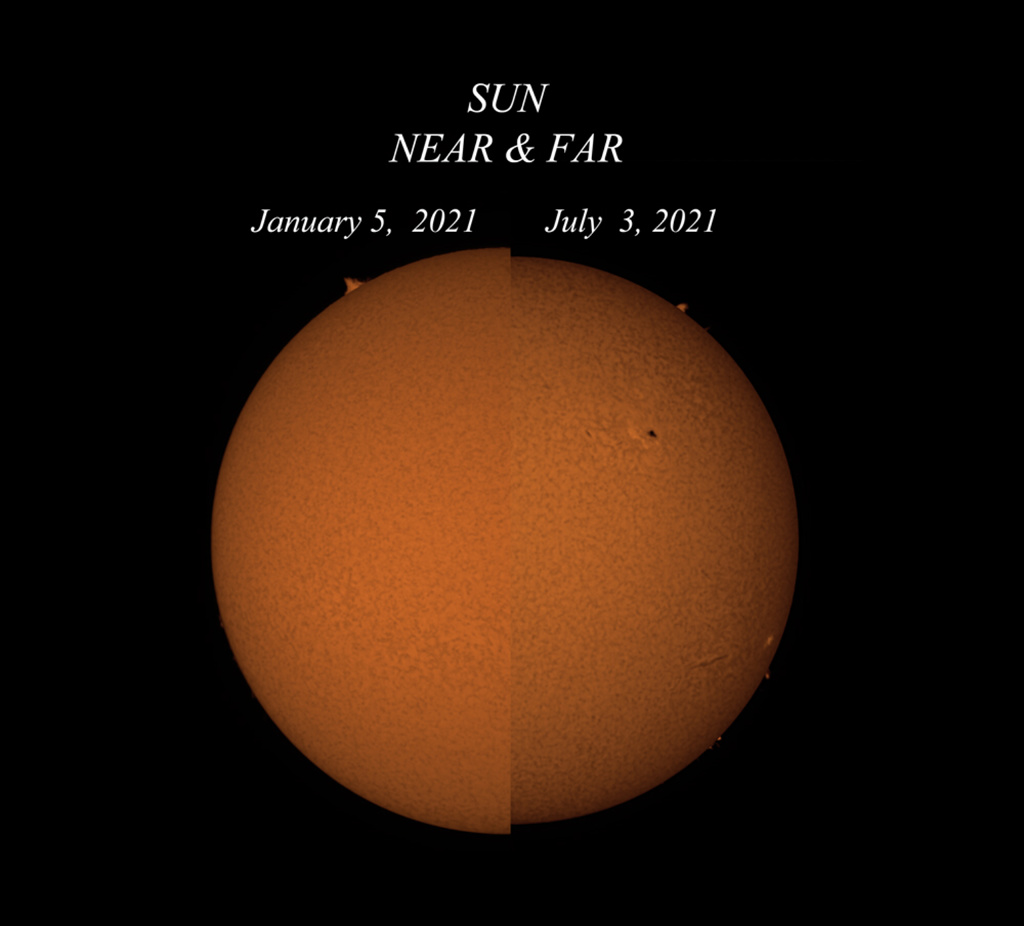
Credit: Richard Jaworski, shared by Astronomy Picture of the Day
Astronomy Picture of the Day explains: “Aphelion for 2021 occurred on July 5th. That’s the point in Earth’s elliptical orbit when it is farthest from the Sun. Of course, the distance from the Sun doesn’t determine the seasons. Those are governed by the tilt of Earth’s axis of rotation, so July is still summer in the north and winter in the southern hemisphere. But it does mean that on July 5 the Sun was at its smallest apparent size when viewed from planet Earth. This composite neatly compares two pictures of the Sun, both taken with the same telescope and camera. The left half was captured close to the date of the 2021 perihelion (January 2), the closest point in Earth’s orbit. The right was recorded just before the aphelion in 2021. Otherwise difficult to notice, the change in the Sun’s apparent diameter between perihelion and aphelion amounts to a little over 3 percent.”
Spacecraft Also Have Perihelion & Aphelions
Upcoming closest approaches to the Sun of note are:
- The next perihelion for NASA’s Parker Solar Probe is February 25, 2022.
- The next perihelion for ESA’s Solar Orbiter is also in February 2022.



